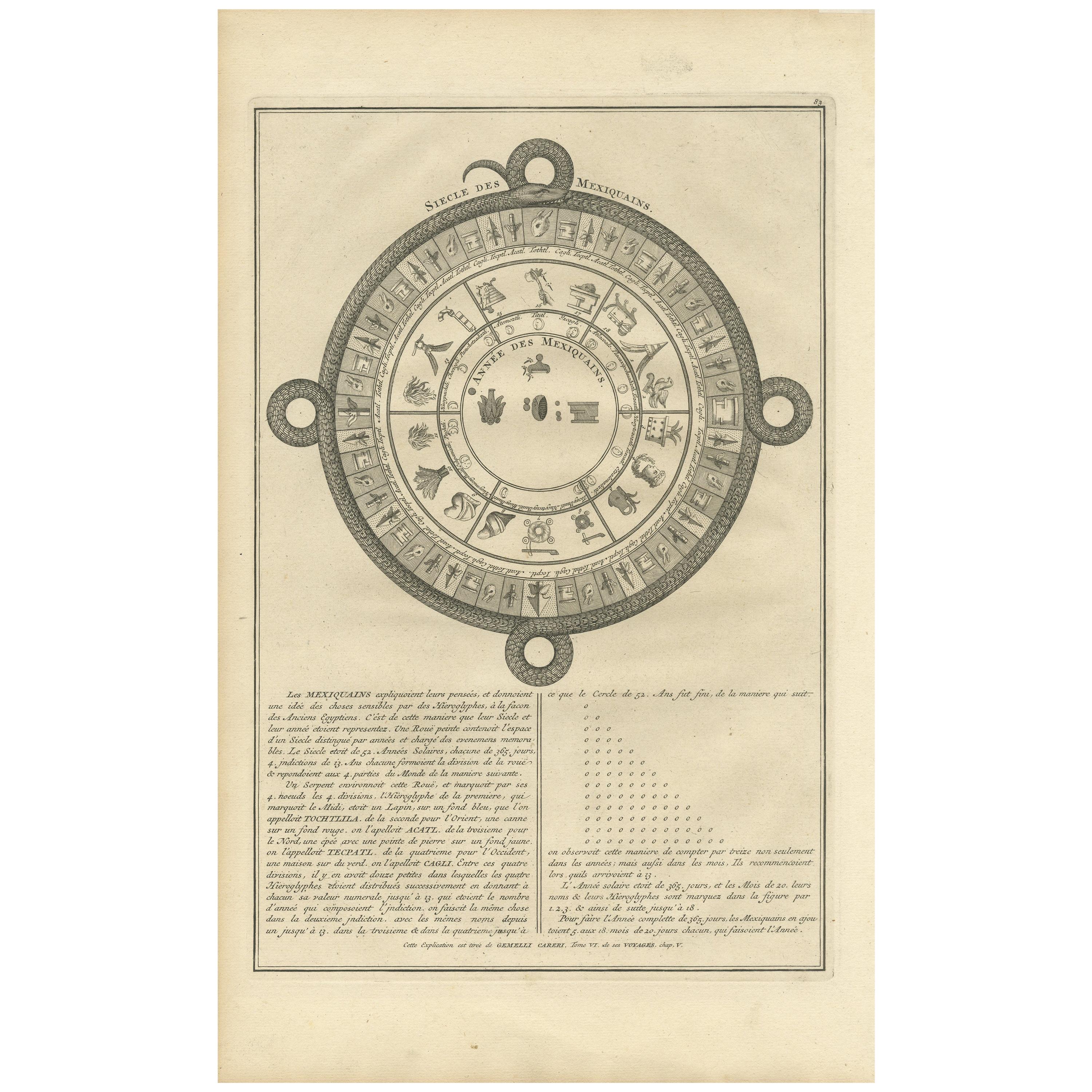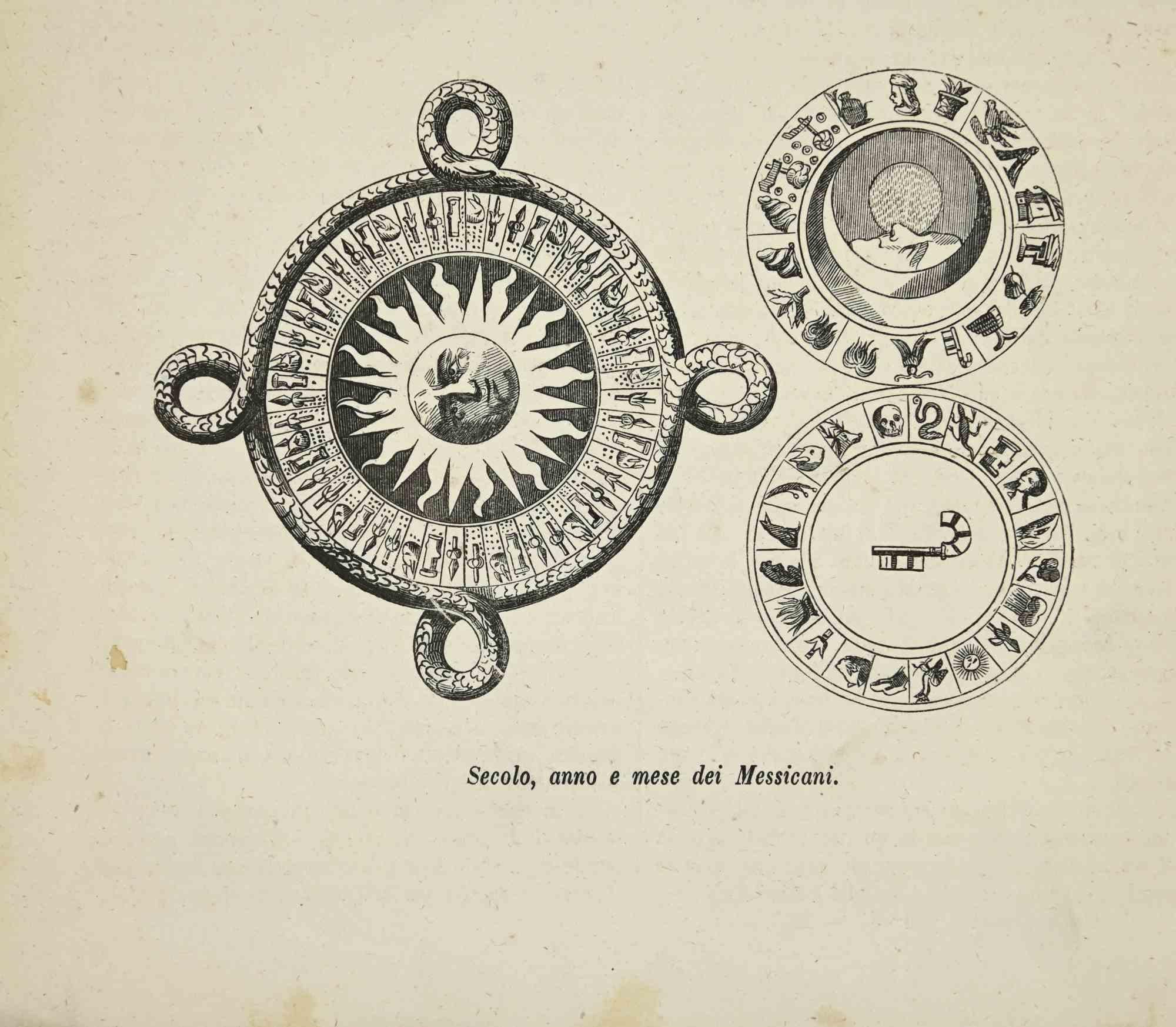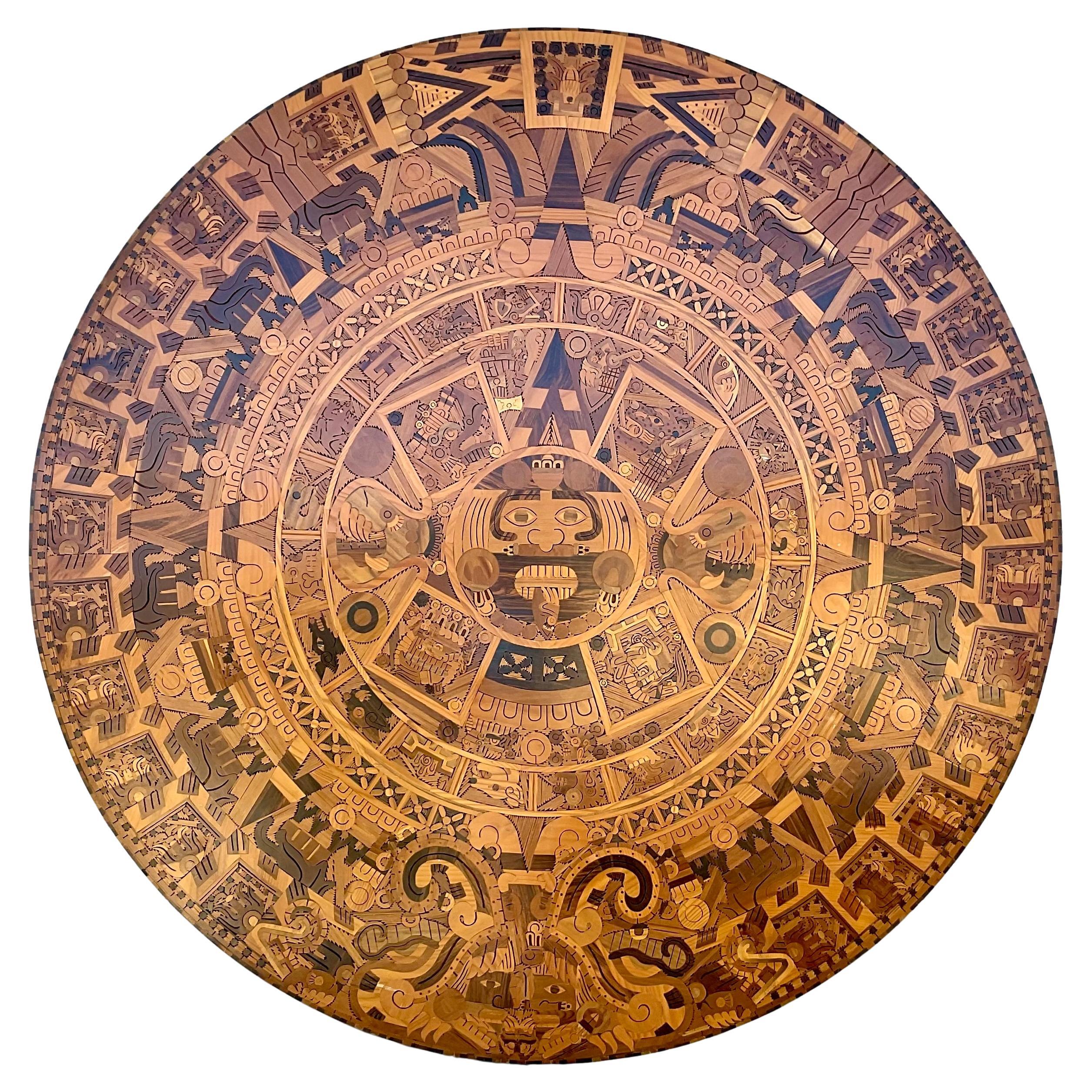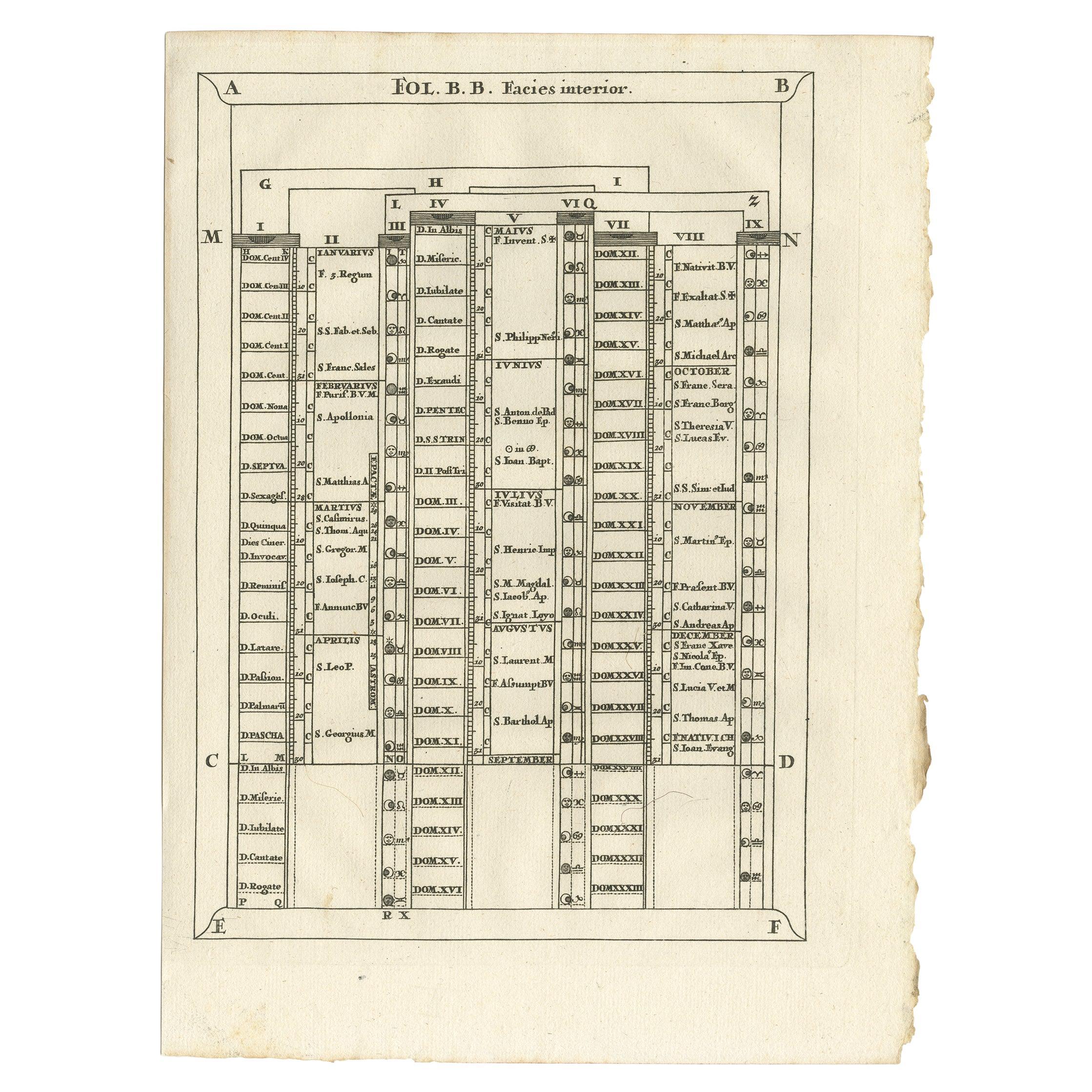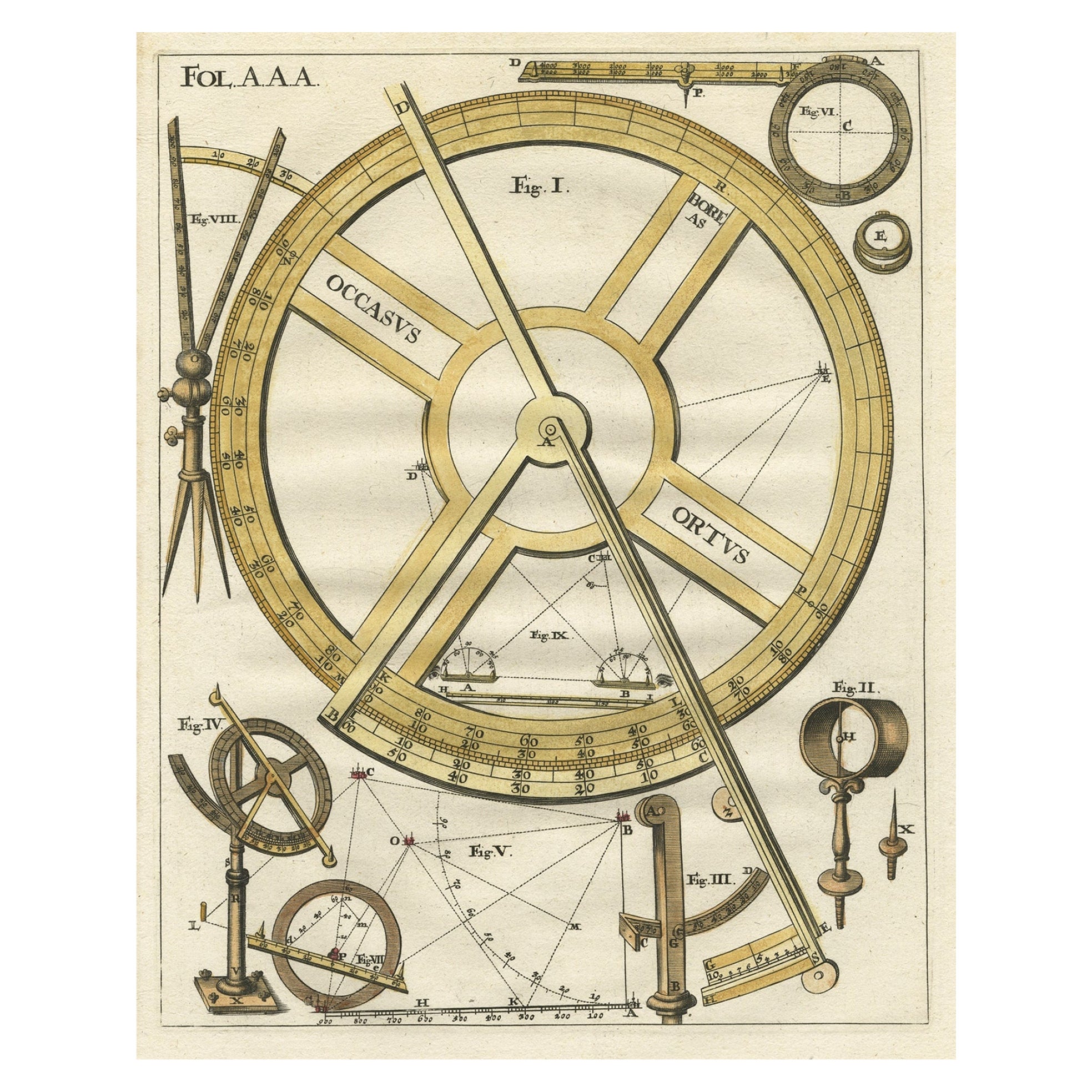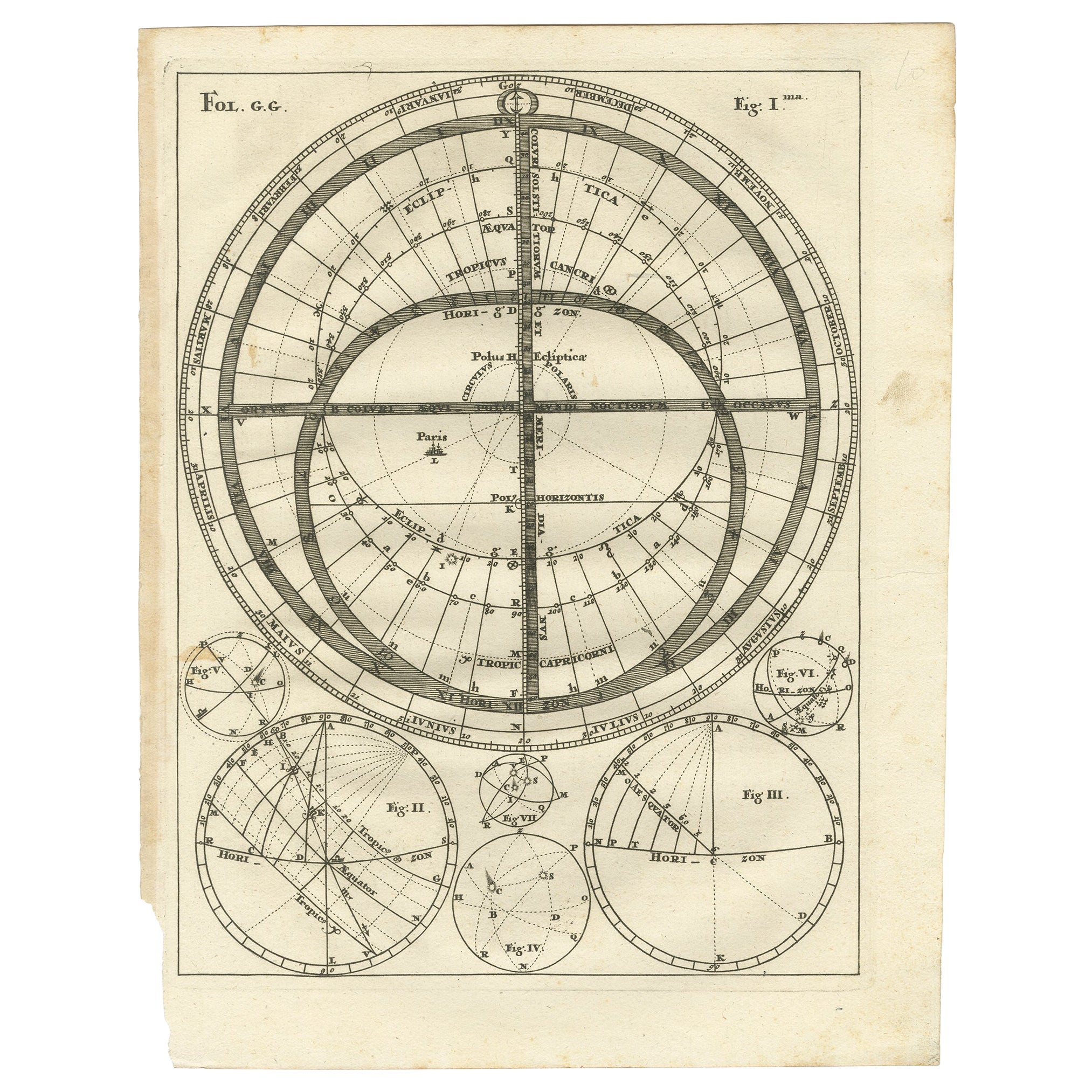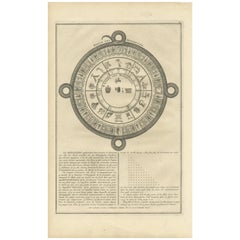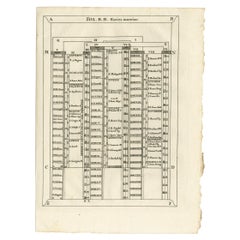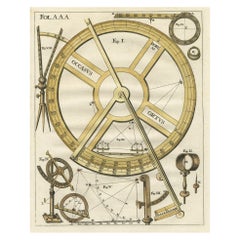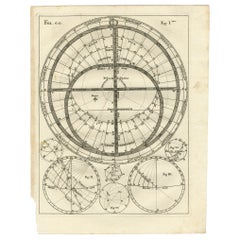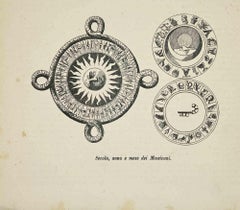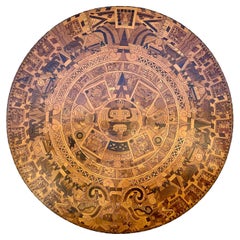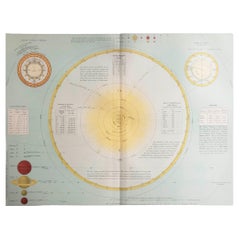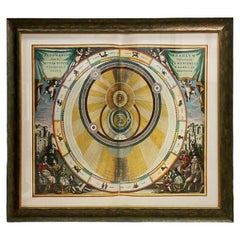Items Similar to Mexica Timekeeping: A Depiction of the Aztec Calendar, circa 1740
Want more images or videos?
Request additional images or videos from the seller
1 of 6
Mexica Timekeeping: A Depiction of the Aztec Calendar, circa 1740
$373.52
$466.9020% Off
£275.53
£344.4120% Off
€312
€39020% Off
CA$517.53
CA$646.9120% Off
A$561.60
A$70220% Off
CHF 297.60
CHF 37220% Off
MX$6,887.72
MX$8,609.6520% Off
NOK 3,682.74
NOK 4,603.4320% Off
SEK 3,480
SEK 4,35020% Off
DKK 2,375.82
DKK 2,969.7820% Off
About the Item
Bernard Picart was the maker of this specific engraving. Bernard Picart (1673–1733) was a renowned engraver known for his detailed and highly skilled work, particularly in illustrating travel books, religious rituals, and ancient civilizations.
Picart collaborated on several major publications in the early 18th century, and one of his best-known works was "Cérémonies et coutumes religieuses de tous les peuples du monde" (Religious Ceremonies and Customs of All the Peoples of the World), published between 1723 and 1743. This work included illustrations of Mexican (Aztec) artifacts and ceremonies,.
Given Picart’s known involvement in illustrating cultural and religious scenes, and his distinctive engraving style, it's plausible that this engraving could have been produced by him. The French text below the image, as well as the detailed and fine craftsmanship, align well with Picart’s typical works. Additionally, many prints related to Aztec cosmology, such as the calendar system, were reprinted and circulated in Europe during the 18th century, making it possible that Picart’s engravings were part of such collections.
While Gemelli Careri might have provided the descriptions and source material, Bernard Picart was the engraver who brought these descriptions to life in visual form.
This print appears to depict an ancient Mexican (Mesoamerican) calendar, showcasing the Mexica (Aztec) system of timekeeping and cosmology. The circular design features symbols, likely representing the days, months, and possibly years used in their calendar system. The outer ring contains a sequence of glyphs, each symbolizing a specific day or concept, and they are arranged within larger geometric patterns that guide the viewer's attention toward the inner circle, which may represent *a year or solar cycle.
At the top, we see the text "Siècle des Mexiquains" (Century of the Mexicans), suggesting the focus is on an important timeframe in their cyclical view of time. The inner part of the design labeled "Année des Mexiquains" (Year of the Mexicans) likely refers to how the Mexica calculated and recorded their years, in close relationship with the days and solar cycles. The central symbols, which are surrounded by other smaller rings, may represent the gods, natural forces, or specific religious or ceremonial items tied to their cosmology.
Below the circular depiction, a block of text provides an explanation in French, describing how the Mexicans (Aztecs) explained their ideas, likely through hieroglyphs or pictograms. It discusses how they divided time into centuries and years, with particular attention to symbolic elements used to depict and measure the passage of time. The reference to ancient Egyptian hieroglyphs indicates a European attempt to relate the unfamiliar Aztec system to something more commonly known in Western scholarship at the time.
The style of the engraving and its French caption suggest that it was likely created by European scholars or explorers fascinated by the Aztec (Mexica) civilization, possibly in the late 18th or early 19th century when European interest in Mesoamerican cultures was growing due to colonial encounters and rediscoveries of indigenous knowledge systems.
Here is the translation of the French text from the image:
---
The Mexicans explained their thoughts, and gave an idea of sensible things through hieroglyphs, similar to the manner of the Ancient Egyptians. This is how their Century and their year were represented. A Wheel contained the span of a Century, distinguished by years and filled with memorable events. The Century was of 52 Solar Years, each of 365 days, 4 indications of 13. Each division of the wheel corresponded to the 4 parts of the World in the following manner.
A Serpent surrounded this Wheel, marked by its 4 nodes and 4 divisions. The hieroglyph of the first one, which marked the South, was a Rabbit, on a blue background, called Tochtli. For the East, the second was marked by a reed on a red background, called Acatl. For the North, the third was a knife with a stone point on a yellow background, called Tecpatl. The fourth one, for the West, was a house on a green background, called Calli, Between these four divisions, there were twelve smaller ones, in which the four hieroglyphs were successively distributed, giving each a numerical value up to 13.
Each one represented the number of years composing an indication, and the same thing was observed in the second indication, with the same names from 1 to 13 in the third and fourth.
The Solar Year was 365 days, and the Months of 20. Their names and their hieroglyphs are marked in the figure by 1, 2, 3, and so on up to 18. To complete the 365-day Year, the Mexicans added 5 days to the 18 months of 20 days each, which made up the Year.
---
This text explains the Mexican (Aztec) calendar system and how they represented their centuries and years using hieroglyphs, as well as the symbolic animals and objects tied to different directions and time periods.
Key words for discovery:
Aztec calendar, Mexica time system, Mesoamerican calendar, ancient Mexican glyphs, Aztec cosmology, historical engravings, Mesoamerican studies, French exploration, Mexican hieroglyphs, 18th-century prints.
- Dimensions:Height: 16.15 in (41 cm)Width: 10.63 in (27 cm)Depth: 0.01 in (0.2 mm)
- Materials and Techniques:Paper,Engraved
- Period:1740-1749
- Date of Manufacture:circa 1740
- Condition:Condition: very good, given age. General age-related toning and/or occasional minor defects from handling. Please study scan carefully.
- Seller Location:Langweer, NL
- Reference Number:Seller: BG-13806-441stDibs: LU3054341487042
About the Seller
5.0
Recognized Seller
These prestigious sellers are industry leaders and represent the highest echelon for item quality and design.
Platinum Seller
Premium sellers with a 4.7+ rating and 24-hour response times
Established in 2009
1stDibs seller since 2017
2,622 sales on 1stDibs
Typical response time: <1 hour
- ShippingRetrieving quote...Shipping from: Langweer, Netherlands
- Return Policy
Authenticity Guarantee
In the unlikely event there’s an issue with an item’s authenticity, contact us within 1 year for a full refund. DetailsMoney-Back Guarantee
If your item is not as described, is damaged in transit, or does not arrive, contact us within 7 days for a full refund. Details24-Hour Cancellation
You have a 24-hour grace period in which to reconsider your purchase, with no questions asked.Vetted Professional Sellers
Our world-class sellers must adhere to strict standards for service and quality, maintaining the integrity of our listings.Price-Match Guarantee
If you find that a seller listed the same item for a lower price elsewhere, we’ll match it.Trusted Global Delivery
Our best-in-class carrier network provides specialized shipping options worldwide, including custom delivery.More From This Seller
View AllStunning Decorative Antique Print of the Aztec Calendar, 'c.1730'
Located in Langweer, NL
Antique print titled 'Siecle des Mexiquains'. Original antique print of the Aztec calendar. The Aztec calendar is the calendar system that was used by t...
Category
Antique Mid-18th Century Prints
Materials
Paper
Set of Prints Depicting an Ancient Political and Religious Calendar, C.1780
Located in Langweer, NL
Almanach Semper Novum (..)
Set of two antique prints depicting an ancient political and religious calendar. Source unknown, to be determined.
Artists and Engravers: Anonymous...
Category
Antique 18th Century Prints
Materials
Paper
$143 Sale Price / set
20% Off
Occasus Ortus: An Astronomical Measuring Device for Angular Precision, c.1780
Located in Langweer, NL
This print, titled "Occasus Ortus", showcases a highly detailed engraving of an 18th-century measuring device, likely related to astronomy or navigation.
The design features various components of the instrument arranged systematically, with each part labeled by figure numbers. The centerpiece is a large circular protractor...
Category
Antique 1780s European Prints
Materials
Paper
$306 Sale Price
20% Off
Antique Print with Charts of Hemispheres by Scherer, c.1703
Located in Langweer, NL
Various antique charts of hemispheres illustrating the positioning of the earth. Printed for Scherer's 'Atlas Novus' (1702-1710).
Artists and Engravers: Heinrich Scherer (1628-1704) was a Professor of Hebrew, Mathematics and Ethics at the University of Dillingen until about 1680. Thereafter he obtained important positions as Official Tutor to the Royal Princes...
Category
Antique 18th Century Prints
Materials
Paper
$229 Sale Price
20% Off
Antique Engraving of Constructing Sun Dials, 1769
Located in Langweer, NL
Antique print of Ferguson's method of constructing sun dials. This print originates from 'The Gentleman's Magazine'.
Artists and Engravers: The Gentleman'...
Category
Antique 18th Century Prints
Materials
Paper
$124 Sale Price
20% Off
Antique Print of a Timeline of the Biblical History, 1732
Located in Langweer, NL
Antique print titled 'Chaine de l'Histoire Sacrée (..)'. Old print with two timelines, one of the Biblical history and another of the worldly governments. This print orginates from '...
Category
Antique 18th Century Prints
Materials
Paper
$421 Sale Price
20% Off
You May Also Like
Customs - Mexican Calendar - Lithograph - 1862
Located in Roma, IT
Customs - Mexican calendar is alithograph on paper realized in 1862.
Titled on the lower.
The artwork belongs to the Suite Uses and customs of all t...
Category
1860s Modern Figurative Prints
Materials
Lithograph
Mid Century Aztec Calendar Large Circular Inlaid Wood
Located in Bradenton, FL
Mid Century Aztec Calendar Large Circular Inlaid Wood
Rare 72 Inch, Hand-Carved, Aztec Circular Wooden Calendar from Mexico. The calendar, or "Sun Ston...
Category
Vintage 1960s Mexican Folk Art Decorative Art
Materials
Wood
Original Antique Astronomy Print. C.1900
Located in St Annes, Lancashire
Great image of the solar system
Unframed.
Chromo-lithograph
Published, C.1900
The measurement is the paper size of the print
Free shipping.
Category
Antique Early 1900s English Folk Art Prints
Materials
Paper
Italian Renaissance Style Framed Print Of A Celestial Map "Tychonic Planisphere"
Located in Queens, NY
Italian Renaissance style framed print of a celestial map depicting the beliefs of the Earth is stationary at the center of the planetary system with the Sun and Moon revolving the E...
Category
20th Century Italian Renaissance Paintings
Materials
Brass
Large First Edition Print 'Description De L'egypt'
Located in Gloucestershire, GB
Wonderful illustrations from Egyptian tombs obtained after the late 18th century French expedition to Egypt under Napoleon Bonaparte.
After Napoleon conquered Egypt in the early 180...
Category
Antique 19th Century French Prints
Materials
Paper
Ancient engraving, map of the earth with circling zodiac
Located in Saint-Ouen, FR
Ancient engraving, map of the earth with circling zodiac "Situs Terrae Circulis Coelestibus Circumnate"
Category
Antique 18th Century European International Style Drawings
Materials
Paper
More Ways To Browse
Aztec Calendar
Used Bridal Veil
Used Tennis Balls
Venetian Bombe
Vintage Apple Blossom
Vintage Asian Art Panels
Vintage Black Ceramic Cats
Vintage Blanket Basket
Vintage Brass Tiger
Vintage Brown Snuff Bottles
Vintage Ceramic Leopard
Vintage Ceramic Rabbits
Vintage Decoupage Paper
Vintage Electric Iron
Vintage Horn Table
Vintage Ibis
Vintage Marble Top Garden Table
Vintage Room Thermometer
